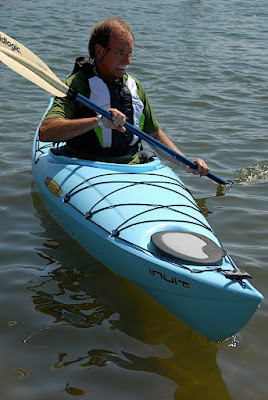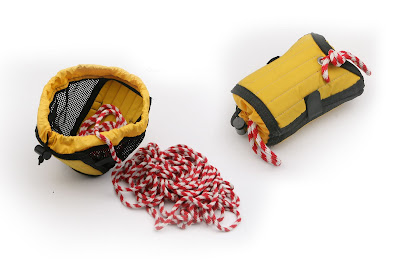Government of India takes a step forward: Supports Design Business Incubation
Prof M P Ranjan

Image00: NDBI Magazine launched today. More at this site.
The National Design Business Incubator (NDBI) was set up at the National Institute of Design (NID) about five years ago with support from the Department of Science and Technology (DST), Government of India. It has now matured into a Section 25 Company with an infusion of funds from the Department of Industrial and Policy and Promotion (DIPP), Government of India when it has received a grant of Rupees 10 crores (Rupees 100 million) to be disbursed to design business incubates over the next four years.

Image01: NDBI incubates meeting Ajay Shankar and Renu Sharma from the DIPP at an informal photo session and tree planting ceremony at the NID Paldi campus.
Today morning the Secretary, DIPP, Ajay Shankar IAS, and Joint Secretary Renu Sharma, IAS visited NID and the NDBI for a special function held at the NID auditorium to disburse the first of the many design incubator grants under the programme called the NDBI’s Venture Ready Fund (NDBI-VRF). Three startups were funded today with seed money to kick-start their design based enterprises, the first in a long series of such investments that are planned by the NDBI with the support of the DIPP as reported by the NDBI CEO Mahesh Krovvidi at the inaugural function this morning. Mahesh reported that so far 13 startups have been given support with funds from the DST and a new phase has begun with support from the DIPP. Plans are afoot to launch more centres to incubate design business in Pune, Delhi, Hyderabad, Guwahati and Bangalore to include 400 designers within 100 startups and which could provide direct employment to over 1000 design and support staff over the next 5 years. Reliance Venture Fund has already supported one startup that is has a patented product offering and is already doing a road show in the US to generate new business for its products with a grant of Rupees 1.5 crores. 17 startups are already lined up for the new centre at Bangalore for which the NID Rajajinagar site will be mobilized as the next major venue for the incubator.

Image02: Ajay Shankar and Renu Sharma visit NID exhibits showcasing potential projects done by NID students and faculty at the campus along with meetings with NID and NDBI management teams.
Pradyumna Vyas speaking at the function called this event a historic milestone and he requested the chief guest to release the first NDBI Quarterly Newsletter and Renu Sharma released the book of profiles of the NDBI startups which was followed by the handing over of the first grant cheques to the three selected incubates to receive the first ever offerings under the present scheme of the Government of India for design businesses with this DIPP support to the NDBI. The NDBI Newsletter gives several examples of new business initiatives started by the incubates as well as the proposals that are in line for future funding. There is a buzz on the NID campus and many students have offered their products to be showcased as part of this new and exciting development. The Government seems to be finally loosening its purse strings when it comes to design and design supports in India.

Image03: Images of the simple event at the NID Auditorium for felicitating the first batch of Design Business Incubatees supported by the DIPP fund.
The Secretary DIPP, Ajay Shankar IAS, spoke at some length about the changing perceptions about design in India and he mentioned the encounter that he had with the NDBI exhibit in Bangalore two years ago when he had mooted the idea of an incubator fund to take the collection of new and innovative items that were on display in the Design Idea Fair that was held on the sidelines of the CII NID National Design Summit of 2007. He spoke of a change towards a green society where sustainable innovations would have a place and urged the NDBI incubates to forge a path forward on two fronts, that of innovation and on the other hand the path of design with branding. He recalled a meeting of a highly respected economics forum where the founder of IKEA, Ingvar Kamprad, was honored much to his surprise, when he saw an entrepreneur being given a platform for the promotion of good design, which by his admission was an unusual event. He urged the young entrepreneurs to read the story of the worlds richest man's, Ingvar Kamprad's, path to success in building an 80 billion dollar enterprise on a simple mission of bringing good design to the masses in his book “Leading By Design: The IKEA Story”. He also recalled an early exposure to design and entrepreneurship when he was a student in the USA when he saw a Professor from the MIT incubate a company based on his research work on sound quality of speakers and he retold the story of the Bose Corporation that had a premium on all its products by virtue of its quality.

Image04: Visit of the visitors and incubates to the NIDUS store at NID followed by the meet with incubates at the NDBI premises.
The entourage moved from the NID Auditorium to the NIDUS shop on the NID campus and then on to the NDBI to meet the young entrepreneurs and see their current offerings after which we assembled at the NID Board room for a session with the NID faculty. This was a highly unusual event and each faculty member present introduced themselves and gave a brief statement about what design meant to them and what they had on their mind for the future of their discipline in the days ahead. In all this was a most satisfying session and I have requested NID to share the video tape of this event with our students and our alumni at an early date. This kind of vision sharing has happened internally over the years but rarely have we seen it in the presence of the Secretary and Joint Secretary of the DIPP who handle the finances of the Institute as well as the policy perspectives for design in India. I hope that this will have long implications for the future of design in India just as the ripples from the design incubation that has finally happened at NID today with Government support for the first time in the history of the Institute and in the history of design in India. In all 37 faculty members were present at this meeting along with the NID Director, Pradyumna Vyas and Mahesh Krovvidi of NDBI. Unfortunately six faculty colleagues from Paldi and Gandhinagar were missed here today and we also missed the Bangalore colleagues who could not make it to this important event at the Paldi campus.

Image05: Meeting with NID Faculty at the NID Board Room facing the lawns. A stimulating session.
While the thoughts are active about the new role for design in India through the incubation possibilities we need to look back at the past fifty years of NID’s efforts to build a profession in India and we now see hope that there may be a thaw in the attitude of Government to the fledgling discipline that has been so under funded and ill-supported when compared to the investments that have been made in the science, technology and management sectors in India. The incubation supports for the technology sectors have been in place in many sectors and the faculty too of those sectors are provided supports and a status that design teachers are yet to see in India today. This too I hope will change in the years ahead and we come out of this long thaw with these changes in National Policy particularly with the implementation of the National Design Policy in the days ahead. I must not forget to mention the hundreds of NID graduates who have managed to incubate their design businesses over the years in a very harsh and unforgiving political, governmental, industrial and business environment in India and have come out with flying colours and it may be an appropriate moment now when NID approaches its 50th year of existence to map out their journeys too for all our policy makers to see and appreciate that design is like a potent seed that needs to be nurtured if it is to flower and bring wealth to our nation and this map will also be a beacon for many young designers to follow.
Prof M P Ranjan






































